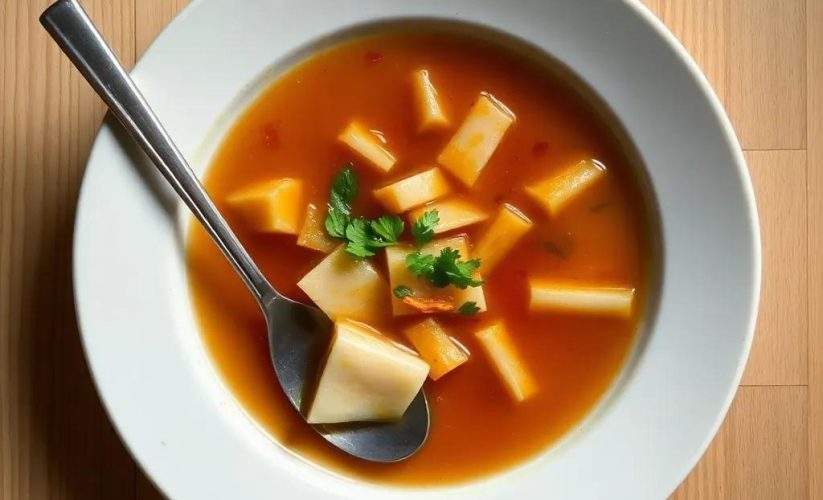Authentic Pozole Recipe: Easy, Hearty, and Gluten-Free Delight

Authentic Pozole Recipe: Easy, Hearty, and Gluten-Free Delight
🌍 Cuisine: Mexican
⚙️ Difficulty: Medium
Ingredients
Nutrition Facts
350 kcal
Instructions
- Place pork shoulder chunks, onion halves, garlic cloves, salt, peppercorns, and bay leaf into a large stockpot. Fill with enough water to cover the meat (about 10 cups).
- Bring to a boil over medium-high heat, then reduce to a simmer. Skim off any foam or impurities that rise to the surface.
- Simmer covered for about 2 to 2.5 hours, or until the pork is very tender and easy to shred.
- While the pork cooks, prepare the chile sauce: Toast the guajillo and ancho chiles in a dry skillet over medium heat for 1-2 minutes, turning frequently until fragrant but not burnt.
- Soak the toasted chiles in hot water for 15 minutes to soften.
- Drain the chiles and blend them with 1 cup of chicken broth until smooth.
- Heat 2 tablespoons of oil in a skillet over medium heat. Pour in the chile puree and sauté for 5-7 minutes, stirring occasionally. Add oregano and cumin. Season with salt to taste.
- Strain the sauce through a fine sieve to remove solids and set aside.
- Once pork is tender, remove it from the broth and shred it into bite-sized pieces. Discard onion, garlic cloves, bay leaf, and peppercorns from the broth.
- Add the hominy and chile sauce to the broth and bring to a boil.
- Return the shredded pork to the pot, reduce heat, and simmer for another 30 minutes to allow flavors to meld.
- Taste and adjust seasoning with salt and pepper.
- Serve hot, garnished with shredded cabbage, radishes, chopped onion, lime wedges, dried oregano, and tostadas or warm corn tortillas.
Serving Suggestions
- Serve with warm corn tortillas or crispy tostadas for a traditional experience.
- Top with fresh shredded cabbage and sliced radishes for crunch and freshness.
- Add a squeeze of fresh lime juice to brighten the rich flavors.
- Sprinkle dried oregano on top for an authentic Mexican aroma.
- Accompany with a side of Mexican-style rice or refried beans.
- For a spicy kick, offer sliced jalapeños or hot sauce at the table.
- Enjoy with a refreshing agua fresca or a cold Mexican beer.
Table of Contents
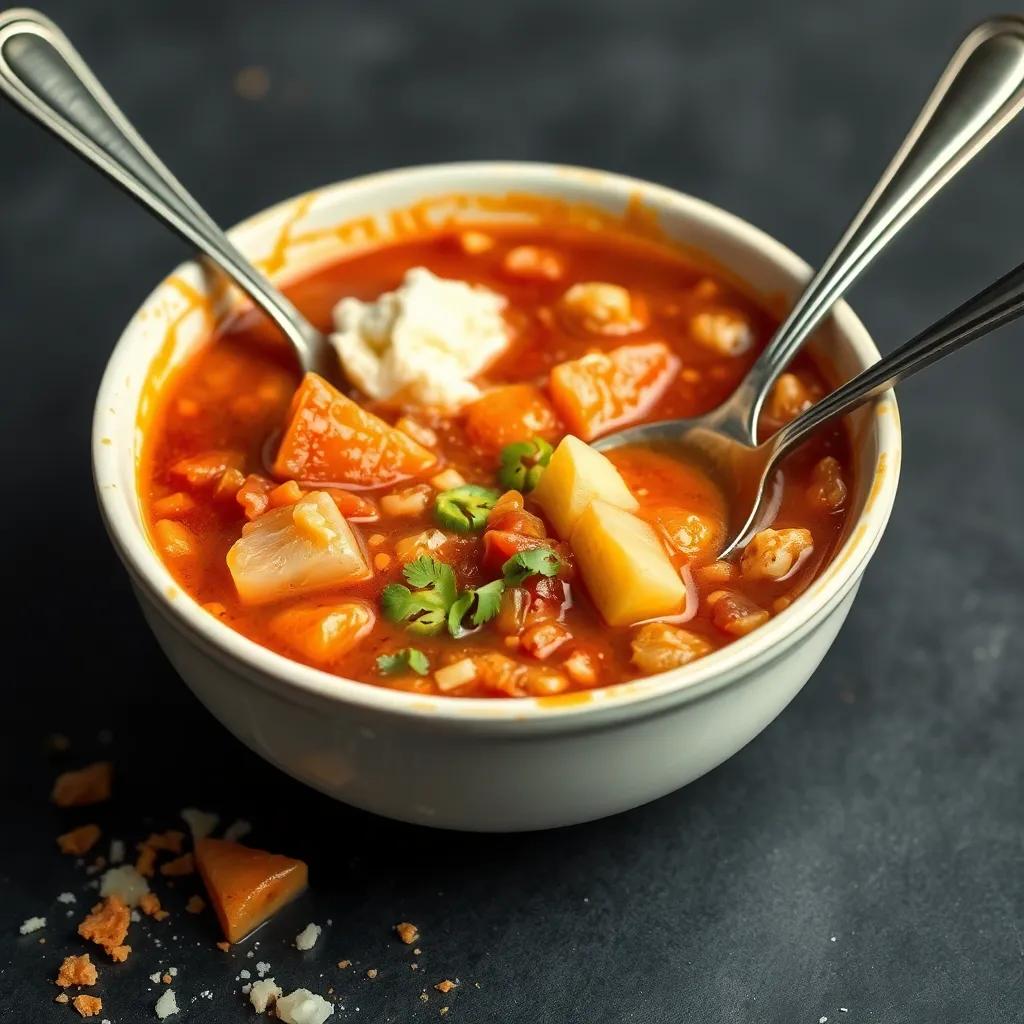
Intro
Pozole is more than just a soup—it’s a celebration in a bowl, offering a satisfying blend of rich flavors and comforting textures that feel like a warm embrace on any day. This authentic pozole recipe strikes a perfect balance: hearty enough to serve as a filling main course, yet simple and approachable in its preparation. Whether you’re planning a festive gathering, a weekend family feast, or a cozy night in, this dish shines as a crowd-pleaser that brings people together around the table.
What makes this pozole truly special is its ability to transform humble ingredients into something deeply flavorful and nourishing without relying on gluten, making it accessible for many dietary preferences. Its vibrant, earthy notes and the interplay of tender pork and hominy create a comforting depth that excites both first-timers and seasoned cooks. Plus, the customizable garnishes add a fresh crunch and bright contrast, making each bowl a delight to assemble and enjoy.
Imagine serving this at a casual get-together or elevating a festive occasion with something that feels both rustic and authentic. It’s a dish that invites you to slow down, savor, and share—a timeless classic that welcomes everyone’s personal touch while delivering a genuinely memorable meal.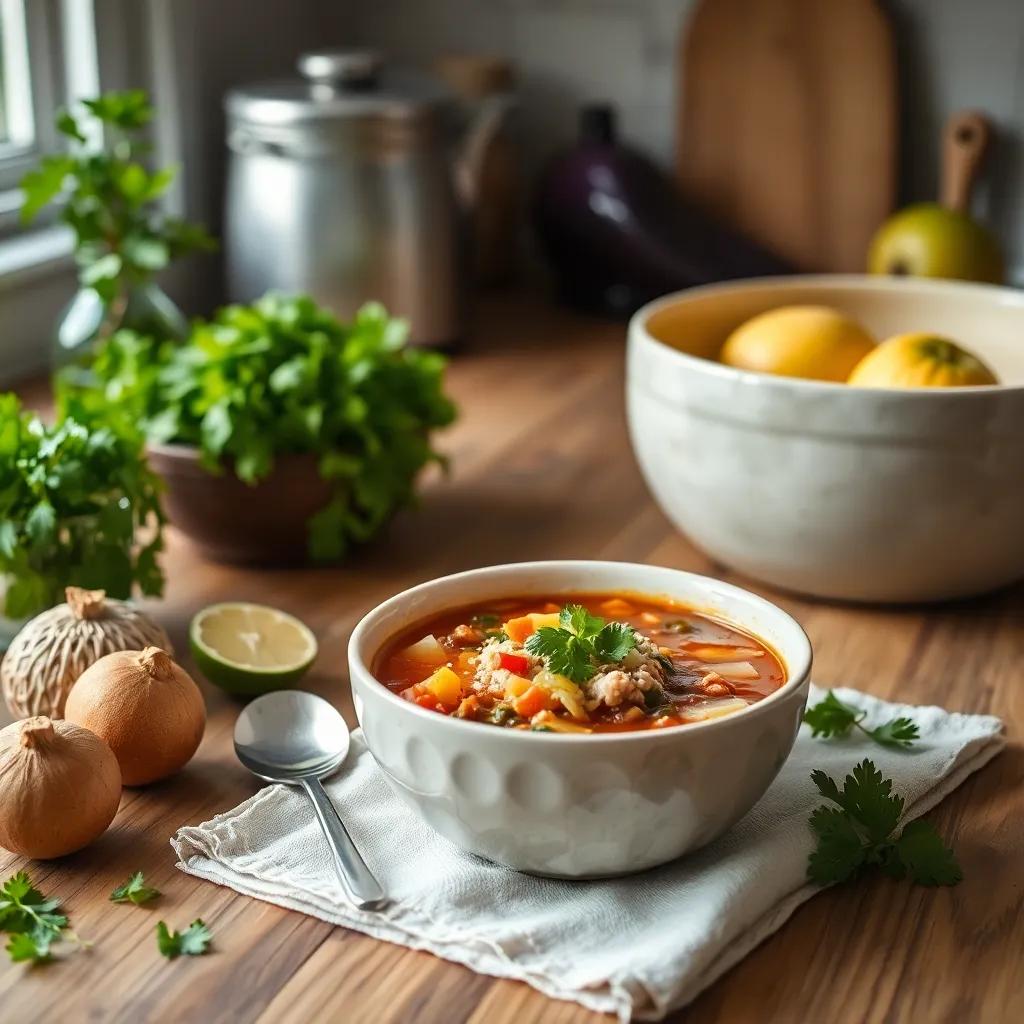
Ingredient Notes
When it comes to crafting an authentic and unforgettable pozole, a few key ingredients take center stage, each bringing their own unique character and soul to the dish. Understanding these staples not only elevates your cooking but also connects you more closely with the rich culinary traditions behind this Mexican classic.
White Hominy:
At the heart of pozole is white hominy—dried corn kernels that have been nixtamalized (soaked and cooked in an alkaline solution), which gives them a distinctive chewy texture and a subtle, nutty flavor. This process also unlocks nutrients and makes the corn easier to digest. When shopping, look for canned white hominy labeled “hominy” or “nixtamalized corn” in Latin markets or well-stocked grocery stores. If you prefer a richer, more traditional texture and have time, you can seek out dried hominy to soak and cook yourself, though canned hominy offers great convenience without sacrificing taste. In a pinch, large-kernel canned hominy is preferable to smaller, processed corn substitutes.
Dried Guajillo and Ancho Chiles:
These chiles are essential for creating the vibrant, smoky red chile sauce that defines pozole’s flavor profile. Guajillo chiles bring a mild, fruity heat with hints of berry and tea, while ancho chiles add deep, smoky, and slightly sweet notes reminiscent of dried raisins or plums. When selecting dried chiles, choose ones that are pliable and smooth-skinned with a deep, rich color. Avoid chiles that are brittle or overly dusty, as these can indicate staleness. Toasting the chiles briefly awakens their oils and intensifies their flavor before soaking and blending them into a silky sauce. For alternatives, pasilla chiles can be swapped in for ancho for a similar smoky richness, while New Mexico chiles provide a comparable fruity undertone to guajillos.
Pork Shoulder:
The choice of pork shoulder is intentional—its marbled fat and connective tissue break down slowly during simmering, infusing the broth with richness and resulting in tender, juicy meat that practically melts in your mouth. When purchasing, look for fresh shoulder cuts with a good balance of meat and fat to ensure depth of flavor and mouthfeel. If pork shoulder isn’t available, pork butt (also known as Boston butt) is a suitable substitute. For those seeking a leaner option, pork loin can work, though it lacks the same silky texture and traditional fat content that make pozole so hearty.
Mexican Oregano:
While oregano is a common herb worldwide, Mexican oregano offers a distinct flavor, more citrusy and robust compared to Mediterranean varieties. This herb brightens the pozole, adding complexity and a subtle herbal tang that complements the smoky chiles and rich pork. You can find Mexican oregano in Latin grocery stores or online. If unavailable, use regular oregano but consider adding a small squeeze of fresh lime juice to mimic that fresh brightness.
By recognizing the role and nuances of these ingredients, you not only honor the authenticity of the dish but also unlock the secrets to a pozole that’s rich, balanced, and deeply satisfying—one that invites friends and family back again and again.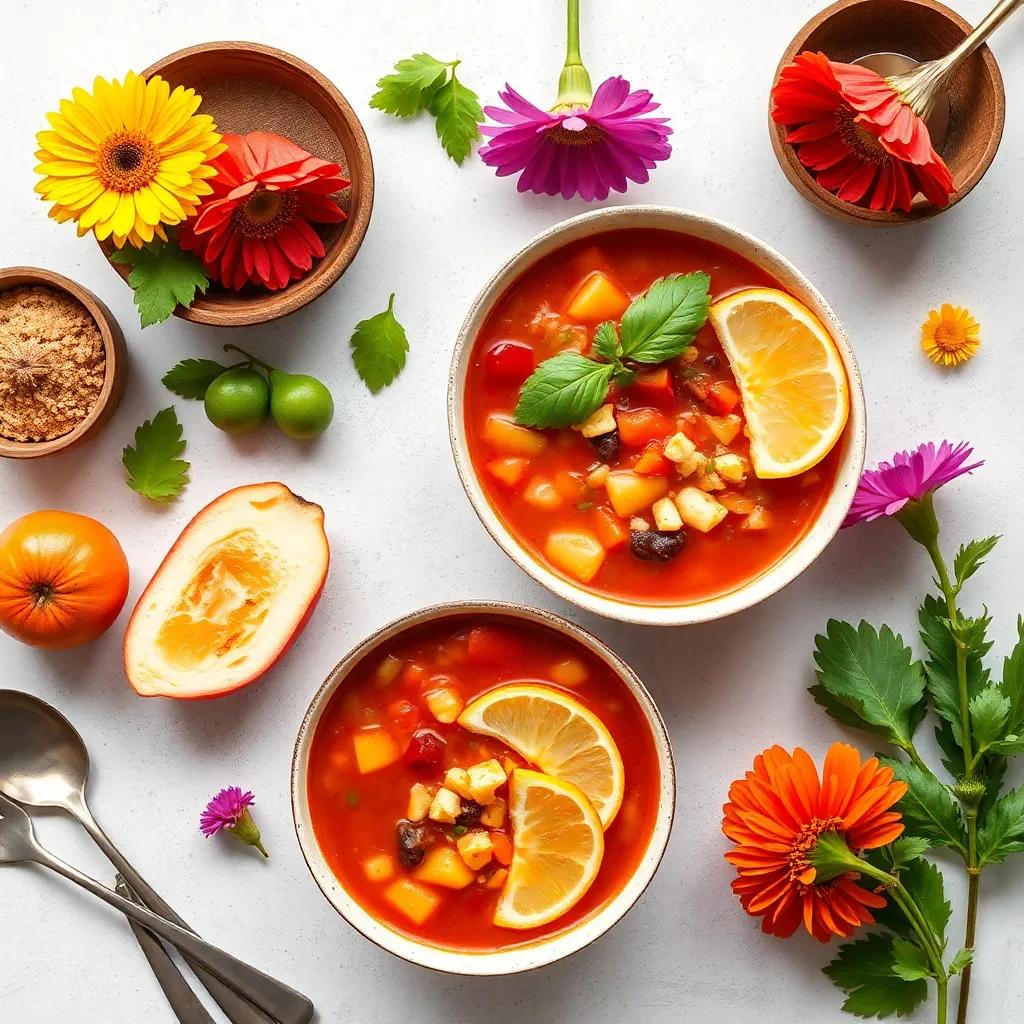
Tips & Variations
Mastering authentic pozole means navigating a few key techniques and embracing personalization to make this classic truly your own. Here are some expert tips and creative variations to help you tailor this hearty, gluten-free delight exactly to your taste and dietary needs.
- Layer Flavors Gradually: Rather than adding all your seasoning at once, taste as you go—especially after simmering the pork and again after adding the chile sauce. This helps you balance the smoky, savory, and slightly spicy elements without overpowering the natural richness of the pork and hominy.
- Perfecting the Broth: For a clearer and less cloudy broth, skim foam and impurities diligently in the first hour of simmering. Using cold water at the start and gentle simmering (not a rolling boil) will also keep the broth clean and flavorful.
- Chile Sauce Adjustments: If you prefer a milder pozole, reduce the number of dried chiles or remove the seeds and veins before soaking. For a bolder punch, experiment by adding a small dried chipotle or a pinch of cayenne to deepen heat and smoky notes.
- Hominy Texture: While canned white hominy is convenient, if you find it too soft, try adding it to the pot closer to the end of cooking to preserve a bit more bite. Alternatively, soak and cook dried hominy in advance for a firmer texture and enhanced corn flavor.
- Customize Your Protein: Though pork shoulder is traditional and ideal for tender richness, this recipe adapts well to other proteins. Chicken thighs (bone-in) can be substituted for a lighter option; simply adjust cooking time to avoid dryness. For a vegetarian or vegan pozole, replace pork and chicken broth with vegetable broth, add hearty mushrooms or jackfruit, and boost the chile sauce with smoked paprika and ancho powder for depth.
- Boost Umami and Depth: Add complexity by including aromatics such as a cinnamon stick or cloves during the initial simmer, removing them before serving. A splash of fresh lime juice just before serving brightens the flavors and balances richness.
- Garnishes as Game Changers: The classic toppings—crisp cabbage, peppery radishes, chopped onion, and lime—bring essential freshness and textural contrast. For a twist, try pickled red onions or a dollop of Mexican crema. Sliced avocado or a sprinkle of queso fresco can add creaminess that mellows the dish’s heat.
- Make It Ahead: Pozole often tastes even better the next day as the flavors marry. Prepare the base a day ahead and store refrigerated; reheat gently with additional broth or water if needed. Garnishes should be kept separate to preserve their crunch.
By embracing these tips and creative swaps, you transform a traditional recipe into a flexible canvas that respects its roots while inviting continuous discovery. Whether you seek a classic pork pozole or a plant-based version bursting with flavor, this recipe adapts seamlessly, making it a timeless favorite for any occasion.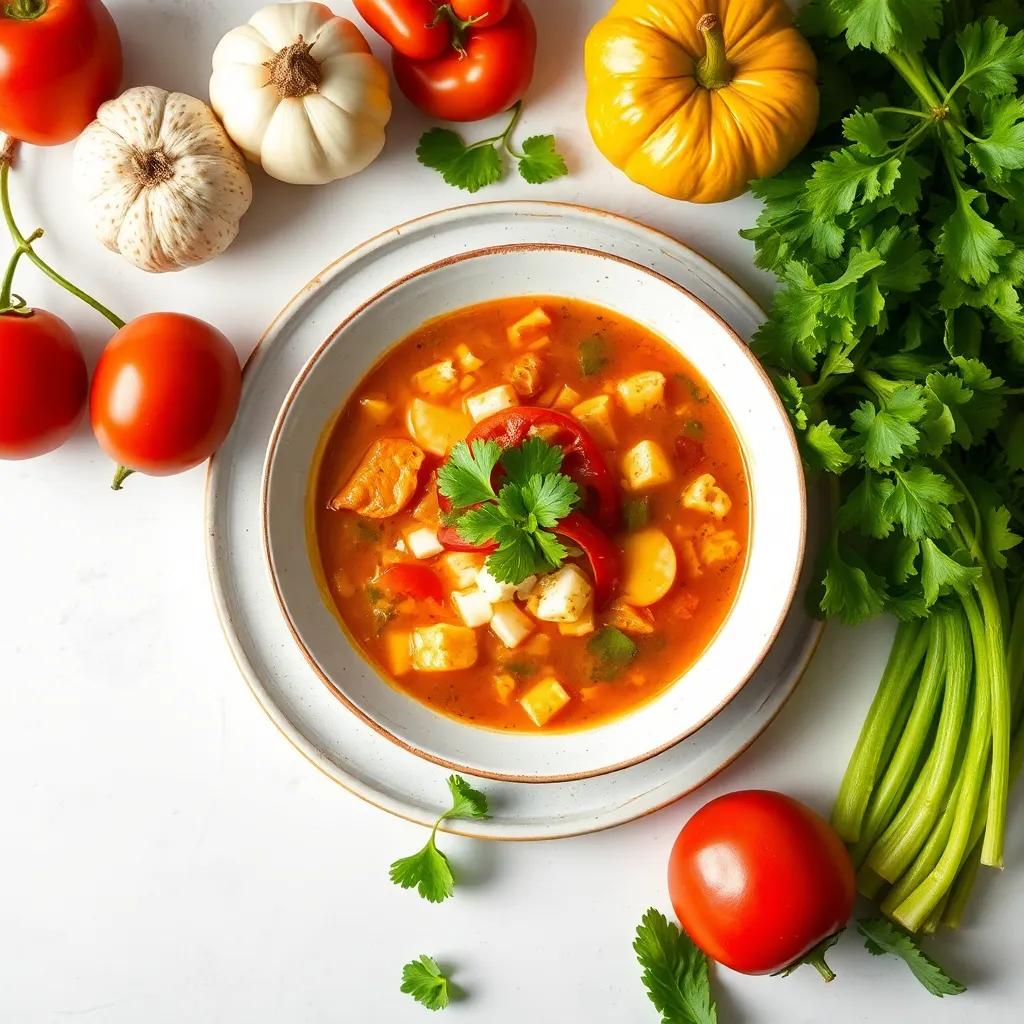
Leftovers & Storage
Leftover pozole is a wonderful bonus—a ready-made, deeply flavorful meal that tastes even better after resting and melding overnight. To keep your leftovers fresh and safe, start by allowing the pozole to cool down to room temperature, but for no longer than two hours to prevent bacterial growth. Transfer the stew into airtight containers—glass or BPA-free plastic containers with tight-fitting lids work best to preserve the rich aromas and prevent spills.
Refrigerated, pozole will stay delicious for up to 3 to 4 days. When reheating, gently warm it on the stovetop over low to medium heat to avoid drying out the meat or overcooking the hominy. You might want to add a splash of broth or water while reheating to refresh the stew’s consistency. Avoid repeated reheating and cooling cycles, as this can degrade flavor and texture.
If you want to save it for longer, pozole freezes beautifully. Portion the stew into freezer-safe containers or heavy-duty freezer bags, leaving some space for expansion. Freeze for up to 3 months without significant loss of flavor or texture. When ready to enjoy, thaw overnight in the refrigerator and reheat gently on the stove. Freezing may slightly soften the hominy, but the pork remains tender and the chile sauce keeps its smoky depth.
This recipe also lends itself perfectly to meal prepping. Prepare a large batch, then portion out servings into single-meal containers for easy lunches or quick dinners throughout the week. Keep garnishes separate and fresh (like cabbage, radishes, and lime wedges) to add at the last moment, preserving their crispness and vibrancy.
For take-alongs or packed lunches, a well-sealed thermos can keep pozole warm for hours, making it a comforting, portable choice for outdoor events or work meals. Just remember to pack any fresh toppings separately and add them once you’re ready to eat.
By following these storage tips, your pozole experience stretches delightfully beyond the first serving, allowing you to savor this traditional Mexican treasure again and again with all its hearty, comforting qualities intact.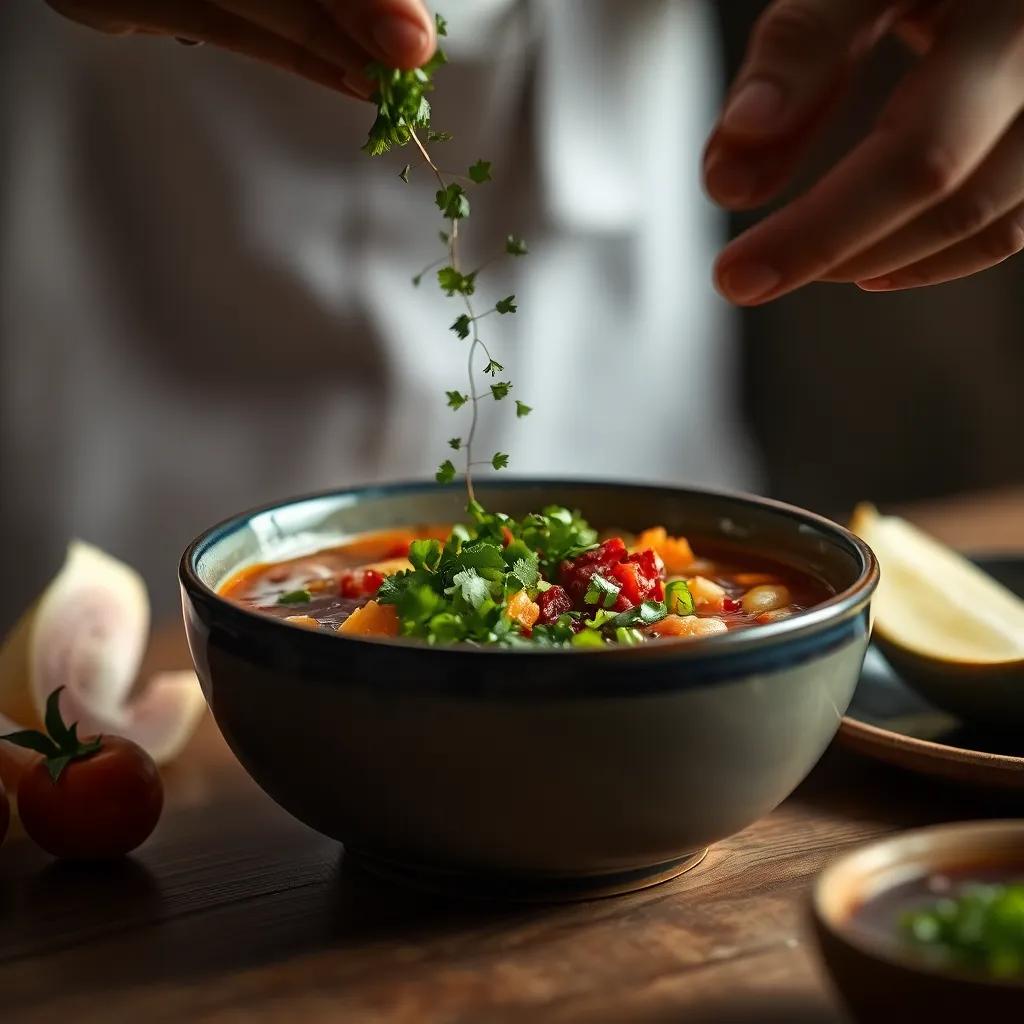
Behind the Recipe
Pozole’s story is deeply woven into the fabric of Mexican culture, stretching back centuries to pre-Hispanic times. Originally, this hearty stew was a sacred dish prepared during festivals and important rituals by indigenous peoples, especially the Aztecs, who used hominy not only as a staple food but also as a symbol of life and fertility. The word “pozole” itself comes from the Nahuatl word pozolli, meaning “frothy” or “foamy,” a nod to the way the stew bubbles and simmers as it cooks.
Over time, pozole evolved from its ritualistic origins into a beloved comfort food enjoyed across Mexico and beyond. The inclusion of pork came after the Spanish conquest, adding a rich depth to the dish that beautifully marries native ingredients with colonial influences. Today, pozole is synonymous with celebration and community—it’s a staple at holidays like Mexican Independence Day and Christmas, as well as gatherings that bring family and friends together around the table.
In many Mexican households, this recipe is a labor of love passed down through generations. The slow simmering of pork shoulder and the careful preparation of the chile sauce reflect a rhythm of cooking that invites mindfulness and connection. Making pozole isn’t just about nourishment; it’s about honoring tradition, sharing stories, and creating memories.
For anyone new to this dish, preparing authentic pozole is a way to taste history and culture in every spoonful. Each element—from the smoky guajillo and ancho chiles to the tender hominy and pork—tells a story of land, legacy, and celebration. Whether served at a festive occasion or enjoyed as a comforting weeknight meal, pozole invites you into a rich tapestry of flavors and heritage that continues to warm hearts and plates worldwide.
FAQ
Can I make pozole vegetarian or vegan?
How do I store and reheat leftovers without losing flavor?
Can I use canned hominy instead of dried?
Is this pozole recipe naturally gluten-free?
What toppings or garnishes work best with pozole?
Can I prepare pozole in a slow cooker or Instant Pot?
How can I customize the heat level to suit my taste?
Wrapping It Up
There’s something truly special about a bowl of authentic pozole—comforting, rich, and naturally gluten-free, it brings a hearty warmth that invites you to slow down and savor every bite. This easy recipe captures that timeless spirit, making it simple to enjoy a beloved Mexican classic in your own kitchen.
We’d love to hear how your pozole turns out! Feel free to leave a comment, rate the recipe, or share your own creative twists. After all, the best meals are the ones we make our own and share with friends. Happy cooking!

